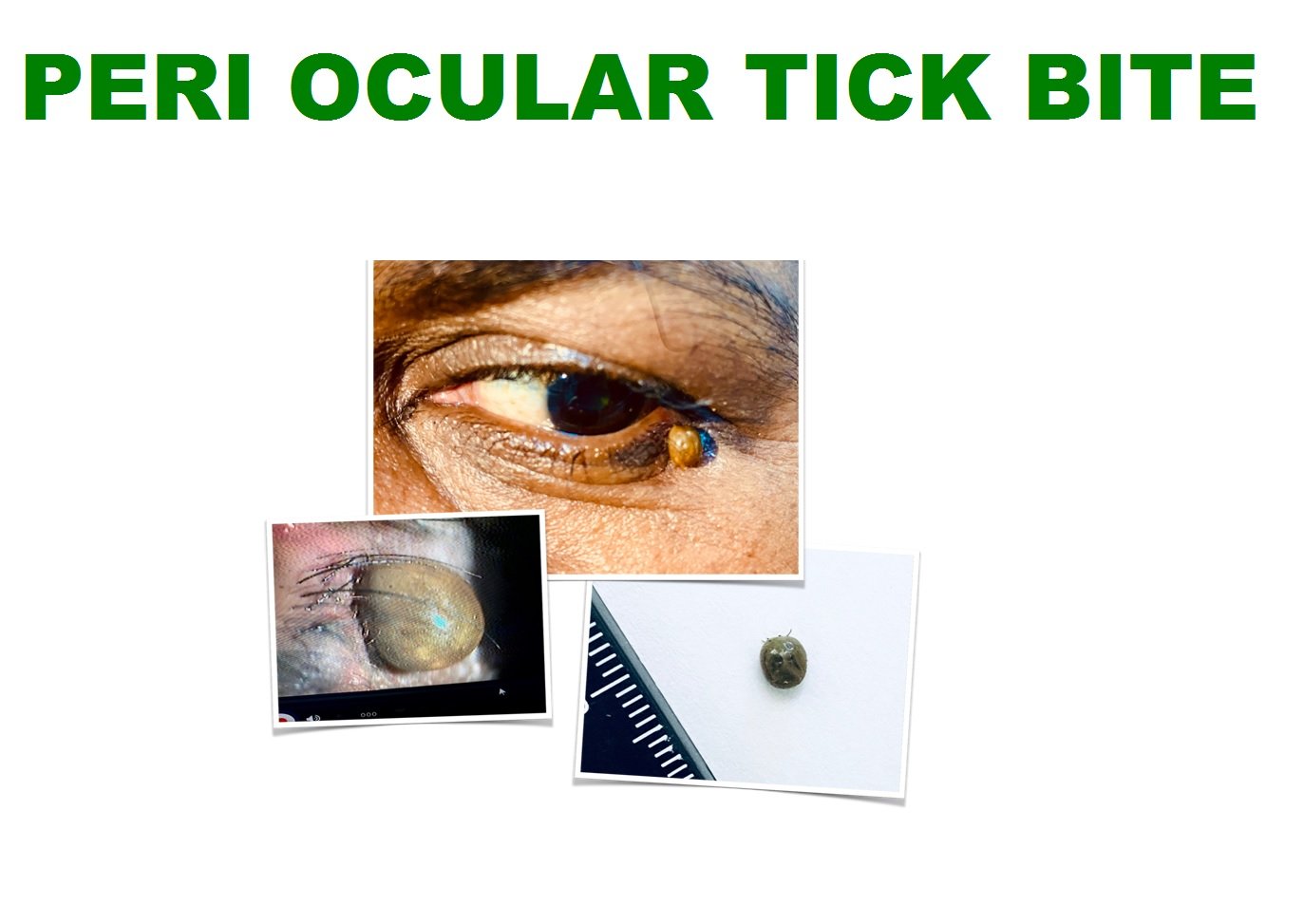
Ticks are tiny crawling bugs in the spider family that feed by sucking blood from animals. They are second only to mosquitoes as vectors of human disease, both infectious and toxic. Infected ticks spread over a hundred diseases, some of which are fatal if undetected. They spread the spirochete. We describe one of peri ocular tick bite from India that presented to us.
CASE REPORT
A fifty plus female presented to us with a history of pain, itching, and swelling near the left eye. A swollen Tick firmly attached to the skin with its mouth parts surrounded by disc-shaped pellets of excreted blood.
The tick was removed carefully using fine forceps. They belonged to the family Ixodidae, the genus in these cases was Amblyomma. Identification is done by observing the anal groove which arches in front of the anus. This is only seen in the genus Ixodidae.
The above patient was followed up for 1 month. Routine blood and serologic tests were within their normal ranges. She responded to tablet cefpodoxime 200mg bd, aceclofenac. tablet ranitidine 150 mg bd, tablet diclofenac 50 mg bd, , and tablet Cetricine HS administered for 5 days.
DISCUSSION
The majority of pathogen species causing disease in humans are zoonotic.
Ticks prefer a humid environment. Adult ticks climb up tall grass and bushes on the edge of trails to wait for an animal to pass by, to which they can attach themselves and feed. The essential characteristic of ticks is their need to ingest a blood meal to transform to their next stage of development. Being opportunistic in their eating habits, they take their requisite blood meal from all classes of vertebrates (e.g., mammals, reptiles, and birds), with the exception of fish.
Broadly, ticks are classified into two major categories – soft ticks and hard ticks. Ticks having tough, leathery skin are known as soft ticks. Hard ticks also have in addition a hard chitinous coat or shield called the scutum on their dorsal surface.
Once on a host, the tick inserts its hypostome, a central piercing element which has hooks/reverse barbs. Ixodes ticks secrete anticoagulant, immunosuppressive, and anti-inflammatory substances into the area of the tick bite. These substances presumably help the tick to obtain a blood meal without the host's noticing.
The difficulty of removing attached ticks is due to the barbed hypostome present in the head that engages extremely tightly with tissue.
Two methods of tick removal are commonly followed. In the first method, the tick is held with fine forceps, pulled outward.
Another method of tick removal is to inject a wheal of lignocaine with epinephrine intradermally beneath the tick. Tick may be induced to release on its own accord.
Lyme disease (with its ocular manifestations) is a worldwide disorder that is rapidly increasing in frequency. It is transmitted through tick bite and is a treatable multisystem disease.
Ocular involvement, though possible at every stage, is most frequently seen in the second and third stages of Lyme disease. This can present with unusual forms of conjunctivitis, keratitis, cranial nerve palsies, optic nerve disease, uveitis, vitritis,and other forms of posterior segment inflammatory disease.
Macular edema and vasculitis are the most frequent retinal findings occasionally complicated by vitreoretinal proliferation.
CONCLUSION
Early detection and treatment of tick-borne diseases is important to prevent multisystem complications that can develop any time later in life.
{{r.reply}}
Your comment was submitted for review. It will start display once it was approved by Admin
Comments